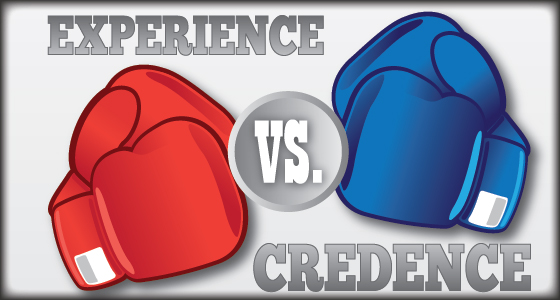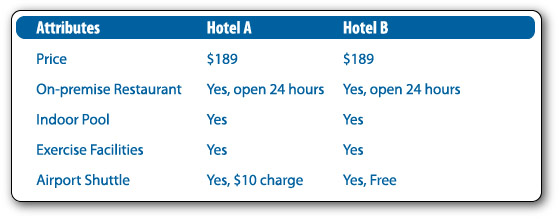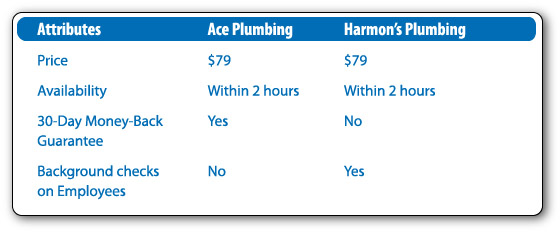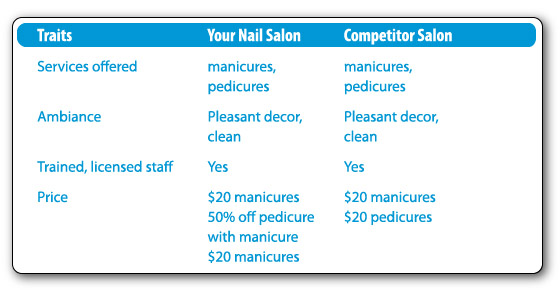
You wake up with an excruciating toothache. You’ve just moved to a new town and haven’t found a dentist yet. How do you find one that is skilled, trustworthy and affordable? A new research study looks closely at the ways in which customers make decisions when choosing a service business. The study, which is due to be published in an upcoming issue of the Journal of Consumer Research, focuses on two categories of businesses: those offering an experience, and credence services (those requiring specific and highly important skills). It turns out the consumers use very different criteria when they evaluate one business against another in order to determine which to patronize.
Experience vs. Credence Services
According to the researchers, there are two kinds of services: experience services and credence services.
Experience services are those that rely heavily on the customer’s experience. A restaurant is an experience service provider. Customers experience ambiance, the taste, texture and smell of the food, and the pleasant or unpleasant demeanor of the waitstaff. Experience services can be important, especially if you’re planning to propose to your girlfriend over dinner. But they usually aren’t quite as vital as credence services.
A credence service is one where skill is important. Credence service providers include physicians, dentists, plumbers, electricians, dry cleaners, attorneys and insurance agents. Hiring a credence service provider can be scary. You don’t want to give your $150 shirts to a dry cleaner that might ruin them. You don’t want a sketchy dentist to do your root canal. If you can’t find customer reviews for these services, you’re forced to look at the attributes of each company and make a decision. Since you frequent a dentist or plumber much less often that you do a movie theater or restaurant, you’re likely to feel pretty uncertain about the decision.
Comparing Apples to Apples
Consumers like to be able to find similar qualities to compare when trying to make a purchasing decision. Comparing alignable traits (those which are exactly the same or very similar) are a consumer’s favorite way to make a decision.
Here’s an example. Julie is traveling on business to St. Louis. She’s never been there, but when she travels she prefers to stay at boutique hotels instead of national chains. She can’t rely on previous experience, and she can’t rely on the reputation of a large company. So she compares alignable traits that are important to her to see if one hotel is better than the other.

Consumers love to make decisions like this. It’s easy to quickly navigate through the forest of features when they’re all the same. Look at the chart. It’s easy to see that, with all other things being equal, Hotel B is the clear-cut winner—Julie won’t have to pay for the shuttle. The decision is easy to make.
Comparing Apples to Oranges
Sometimes businesses have characteristics that don’t align, which makes it harder for the consumer to compare the two.
Perhaps Dan needs to hire a plumber to clear a clogged drain. The list of alignable characteristics between two plumbers might be pretty short: they both have a plumbing license. They both charge the same rate. Neither have complaints with the Better Business Bureau. Now what? If the plumbing companies are smart, they are trying to differentiate themselves with a non-alignable trait. Look at the chart:

The 30-day money back guarantee and criminal background checks are non-alignable traits; they aren’t similar at all. But based on research findings, the consumer will make his decision because of one of those qualities. Maybe Dan is worried that his wife will be home alone with the plumber shows up to do the work, so he chooses Harmon’s Plumbing for peace of mind. But if Dan will be home to greet the plumber, and he’s a big burly guy who’s not concerned about a scary ex-con plumber, the company with the money-back guarantee might be more attractive.
Why This Study Matters to Your Business
If you have an experience-based business, you’ll want to focus your marketing on one or two alignable traits that you can do better than your competition. For instance, if you’re a nail salon, here are the traits you might share with your competitors:

Your customers are going to go down that list and compare you with the salon down the street. It’s your job to be markedly better at one or more of those attributes in order to win the business. In this case you might offer half-priced pedicures to customers who get manicures. The potential customer is going to look over the attributes of both you and your competition and see that you have a better price. According to the study, she’ll call you to book an appointment.
If you have a credence-based business, you’ll want to figure out something that your competitor doesn’t have, and focus your marketing efforts on showcasing that attribute. Perhaps you’re a dentist. Both you and the guy down the street have a license to practice dentistry. You both perform the same procedures and have similar pricing. Your potential customer doesn’t feel comfortable just relying on those similar attributes to make a decision; she wants something that will give her a gut reaction to help her decide.

The customer who feels that money is the most important criteria for a dentist might choose your competitor. But the customer that wants her dentist to be warm and caring would choose you.
Research the Competition and Conduct a Survey
How do you decide which is the best non-alignable service to offer? Conduct a survey to find out what your customers want. You might find that people are purchasing over-the-counter teeth whitening products and don’t really care about that service at the dentist, but are very nervous about going to the dentist and are interested in stress-reduction techniques. You can offer just about anything, as long as it’s something the customer wants, and it’s not something your competitor offers (or something he offers but doesn’t advertise). Once you have some research data, focus your marketing on that non-alignable service and watch your business increase.



































